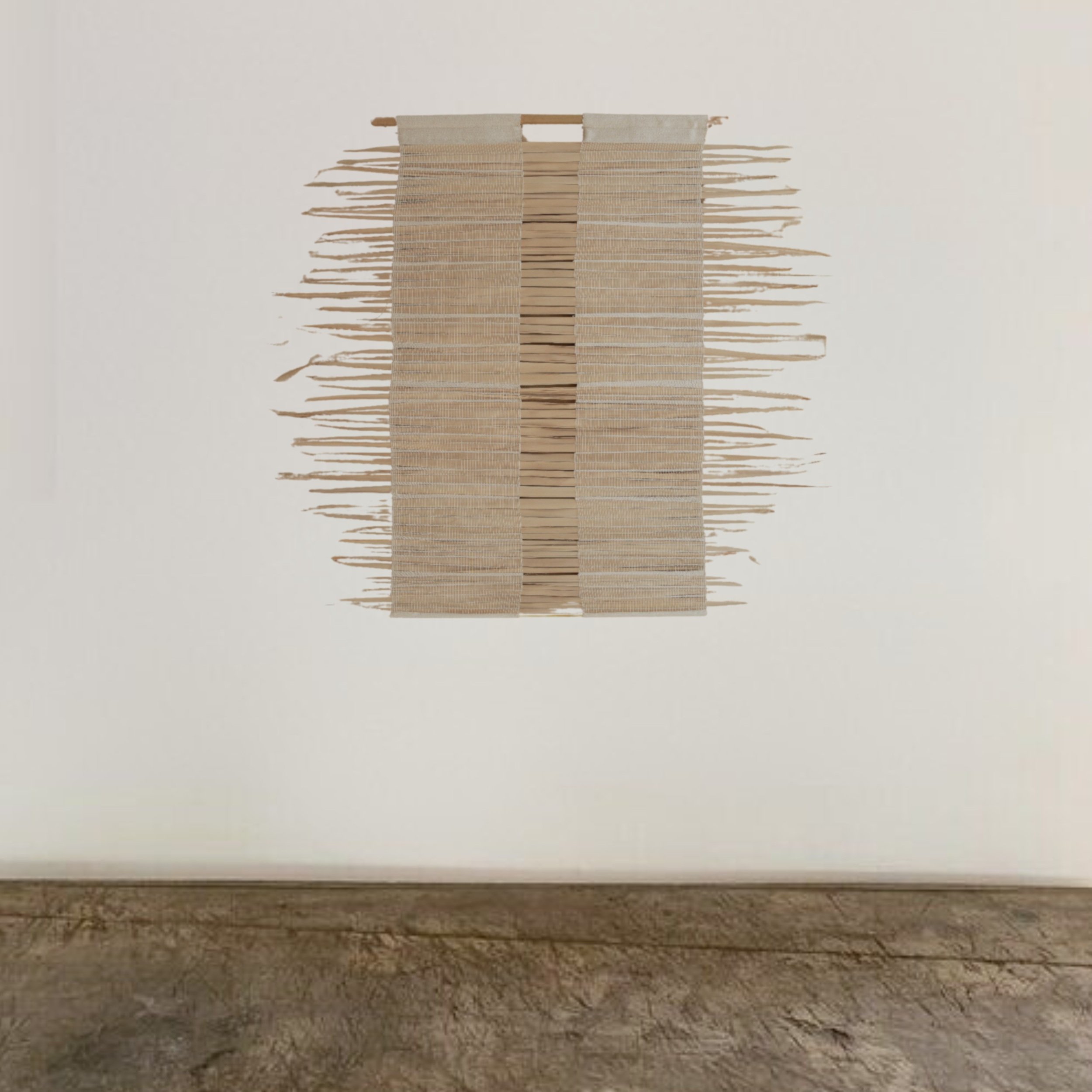DIMENSIONS
127 x 111 CM
Handwoven cotton, silk, llala Palm, Bamboo, Brass
AbOUT LEILA ATELIER
Leila's journey began with an extended trip to India, where she became fascinated by the history of textiles and the stories they carry. Upon returning to South Africa, she dedicated herself to learning traditional weaving techniques, eventually establishing a studio that reflects her passion for beautiful, resonant textiles. Leila Atelier's creative process is deeply rooted in traditional craftsmanship, emphasizing the beauty of natural imperfections. Central to their design philosophy is the celebration of the weaving journey itself; rather than hiding process marks, they incorporate elements like the advance of the warp, bobbin changes, or even a dropped shuttle into their unique designs. This approach embraces the Japanese concept of wabi-sabi, finding beauty in imperfection and transience.











